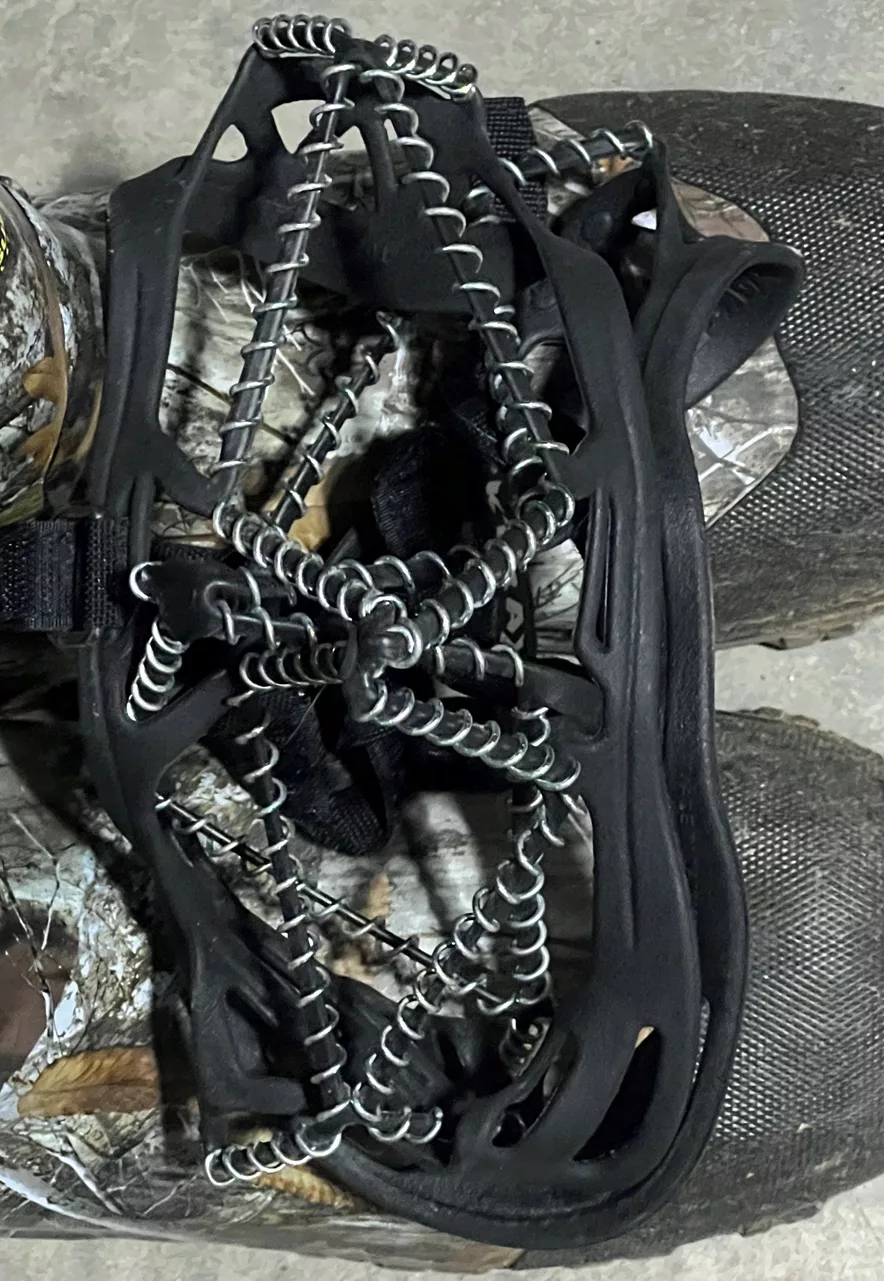
Jeepers! A new pair of coil ice creepers awaits addition to a pair of winter boots before heading out to the first ice action. Simonson Photo
By Nick Simonson
First ice is a fun, yet apprehensive time. The excitement of getting out on a fast early bite for walleyes, perch or any other species under that initial layer of ice is often balanced against the nervousness of eyeing up that new three or four inches covering the water and its quality and its evenness. Admittedly, I’m usually one of the last ones out on first ice, but that fact has rarely bothered me as the habitat holding pheasants often sees less pressure as a result of the draw that early ice has. However, when I do head out, there’s one tool I’m never without. In fact, after November, I rarely walk around the block without them.
That’s because I’ve delivered my share of self-inflicted bumps and bruises on the ice, and one head-over-heels slip-turned-half-flip which I’m certain caused a concussion in my younger days. Most of those incidents have come on early ice, where the lack of snow cover has left a sheen made even more slippery by a fine film of water that comes up with each hole drilled. Even at late ice, my buddies and I have endured trips to the ER and general aches and pains made worse by a slippery sprint to a popped tip-up flag, and the drops to one knee or the straight up falls that can occur when areas of later season ice are blown clean of snow by wintry winds.
It took a few ice seasons to wise up, but now I rarely leave home in winter without a set of ice creepers wrapped around my boots, including many times just to take the dogs around the block, where drifts on the city street become compacted and the daily melt-and-freeze cycle makes even those ten-minute trips treacherous. On new ice, these tools become even more important as the clear surface provides perhaps the season’s most slippery experience before snow begins sticking and piling up on a frozen lake. While any set of creepers is better than none, I prefer the coiled spring options as they provide better all-foot traction than pegged versions or those center-of-the-boot cleats that drop in between the heel and the toe. The tradeoff for the coiled options is that they often don’t last as long under heavy use (such as the daily walks around the block) as the rubber beneath the coils wears down, but for an ice season they fit the bill.
Through the downward pressure of bodyweight through the boot, any variety of creeper will cut into the new ice providing a safer situation with each step. While it isn’t always uniform, the grip allows for firmer steps and better assistance against slipping, which in turn prevents falls that can knock an ice angler out of the action for a day, or in the case of broken bones, perhaps a season or longer. Whether you opt for the high-end models with coils and even small chains that wrap around a boot, or the cheaper pegged versions, the seasonal purchase of creepers for ice fishing is a safety investment akin to shooting glasses for trap, ear plugs for rifle sighting, or a life jacket for openwater fishing, and if you spend any other time outdoors with pets, or just winter walking, they can pull double duty. Just be certain to take them off before stepping on smooth surfaces such as garage concrete or convenience store floors, and to avoid getting chewed out, mom’s new laminate wood she just had installed in the kitchen.
Take one risk out of the equation as you’re sizing up that early ice this season and get yourself a pair of ice creepers in your preferred style. While they won’t help you find fish like a sonar unit or keep the tension level when battling the big one through the hole like a new reel, their ability to help prevent slips and falls will foster a better and more successful day on the ice now and all season long…in our outdoors.
